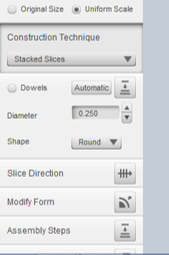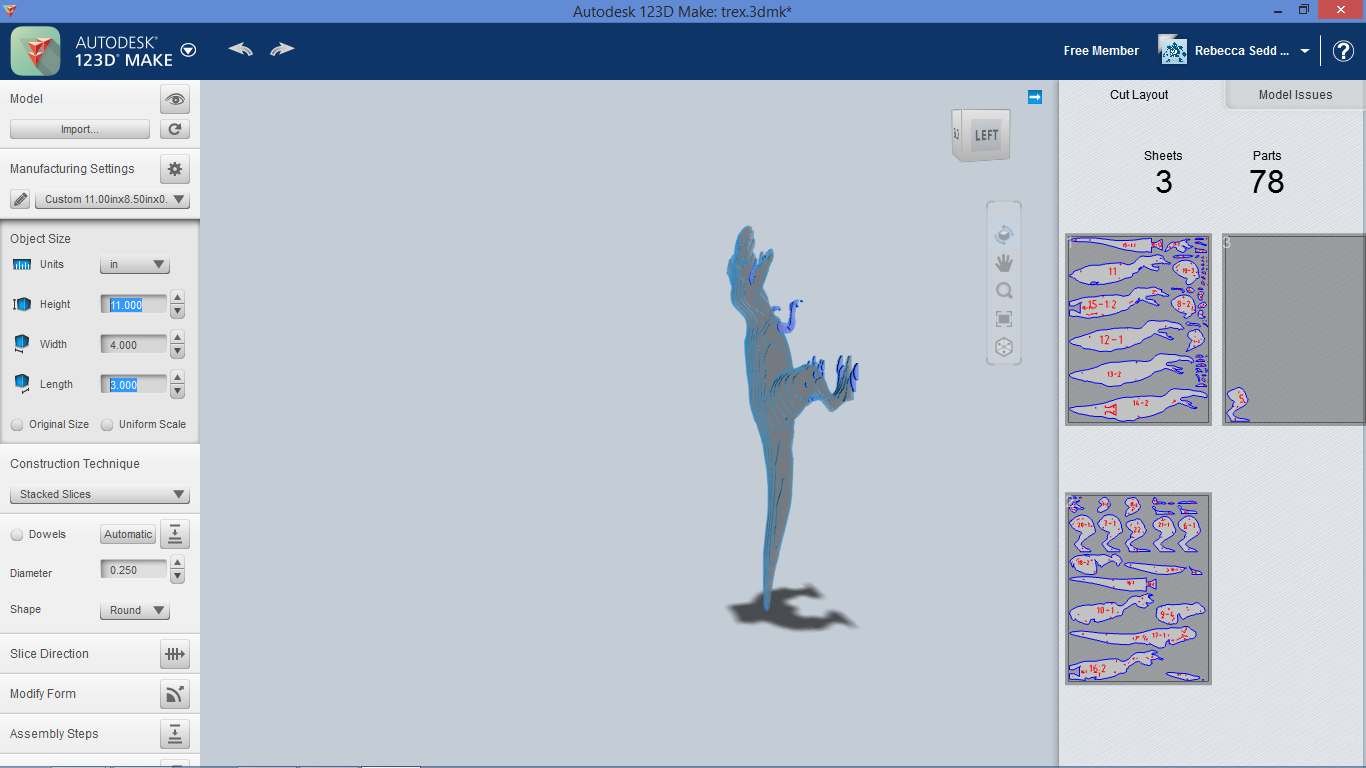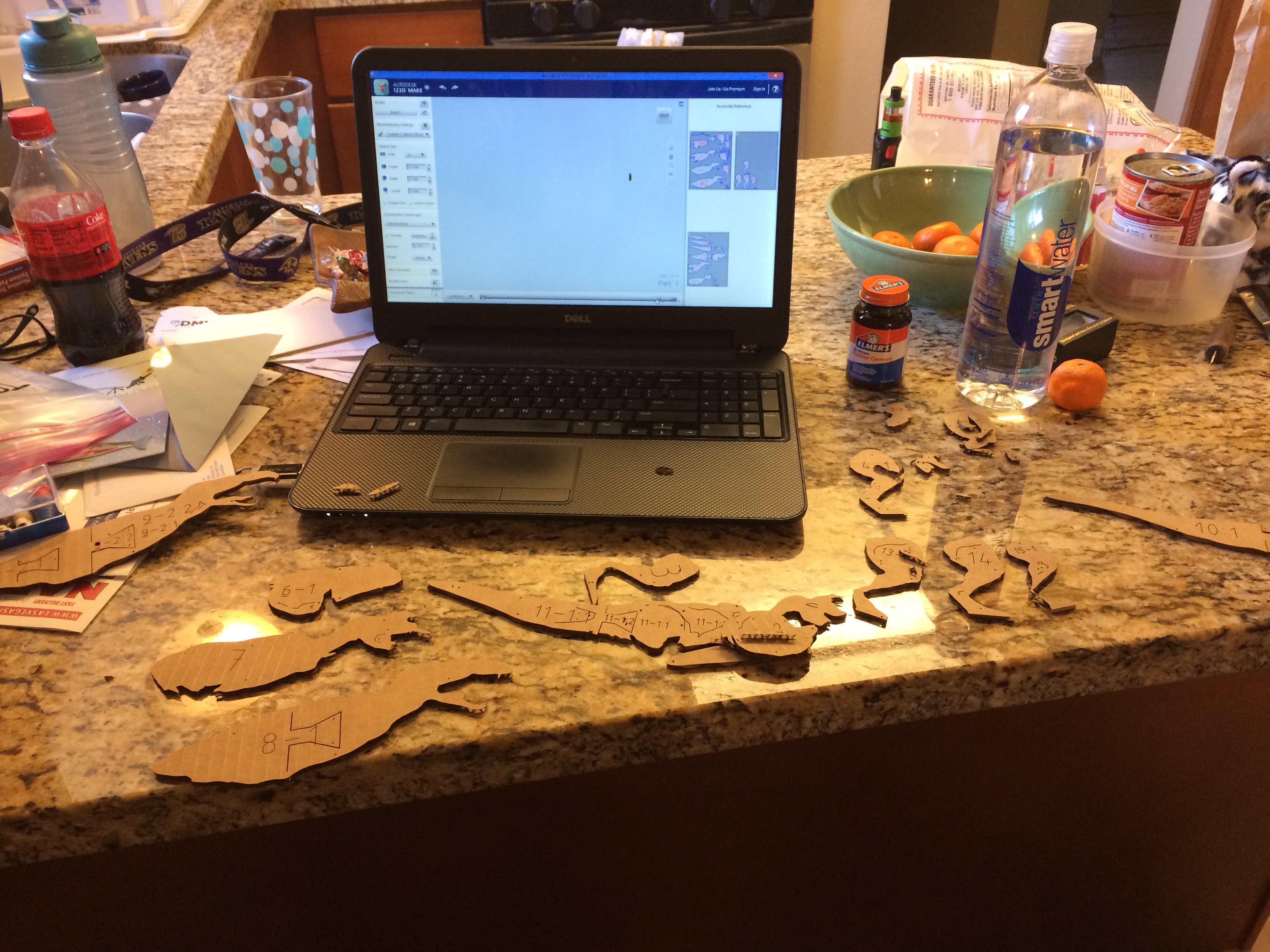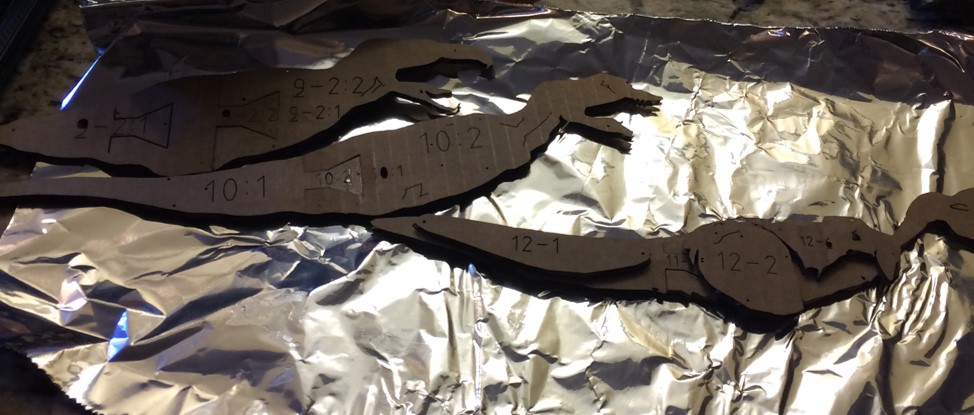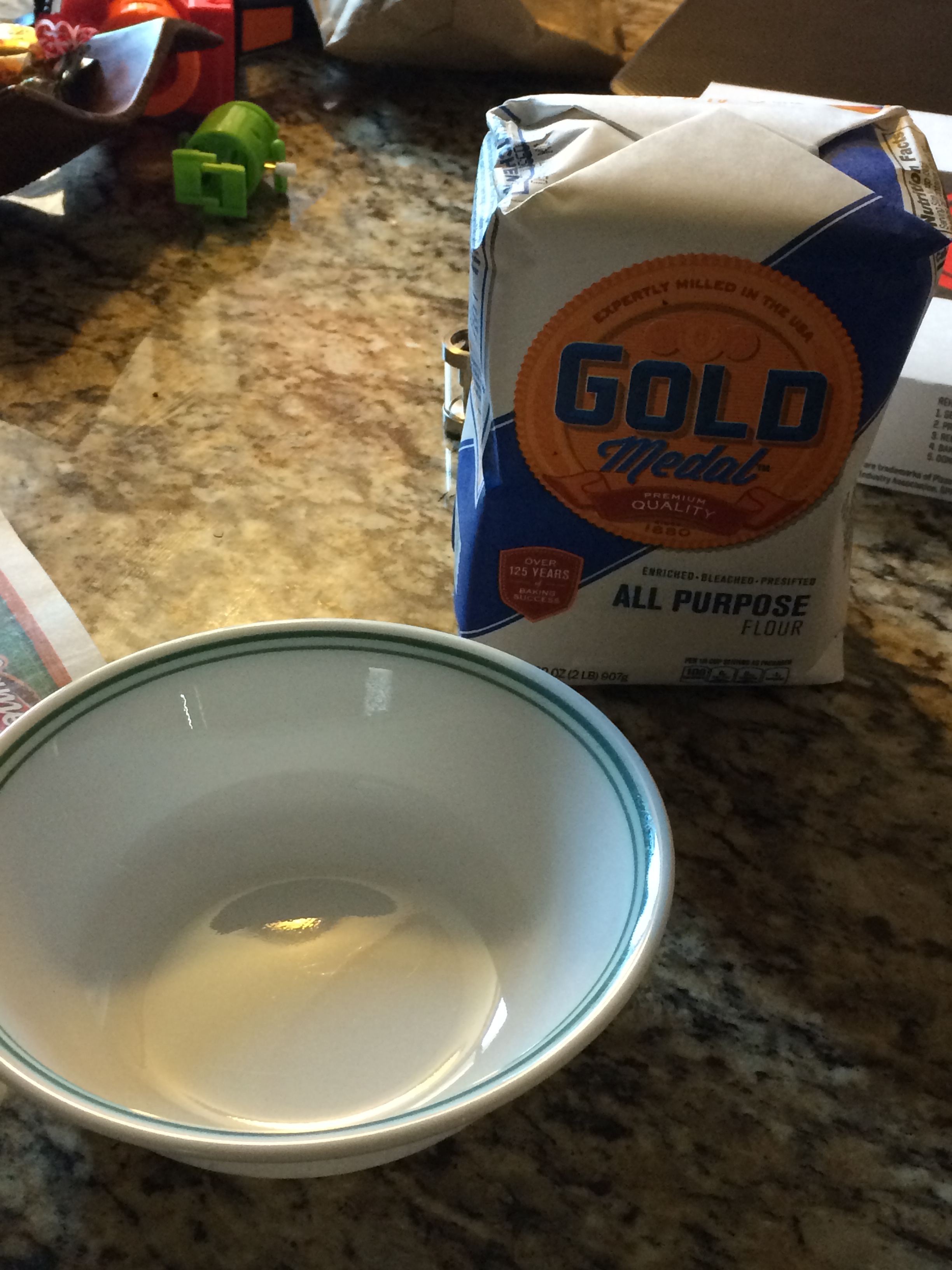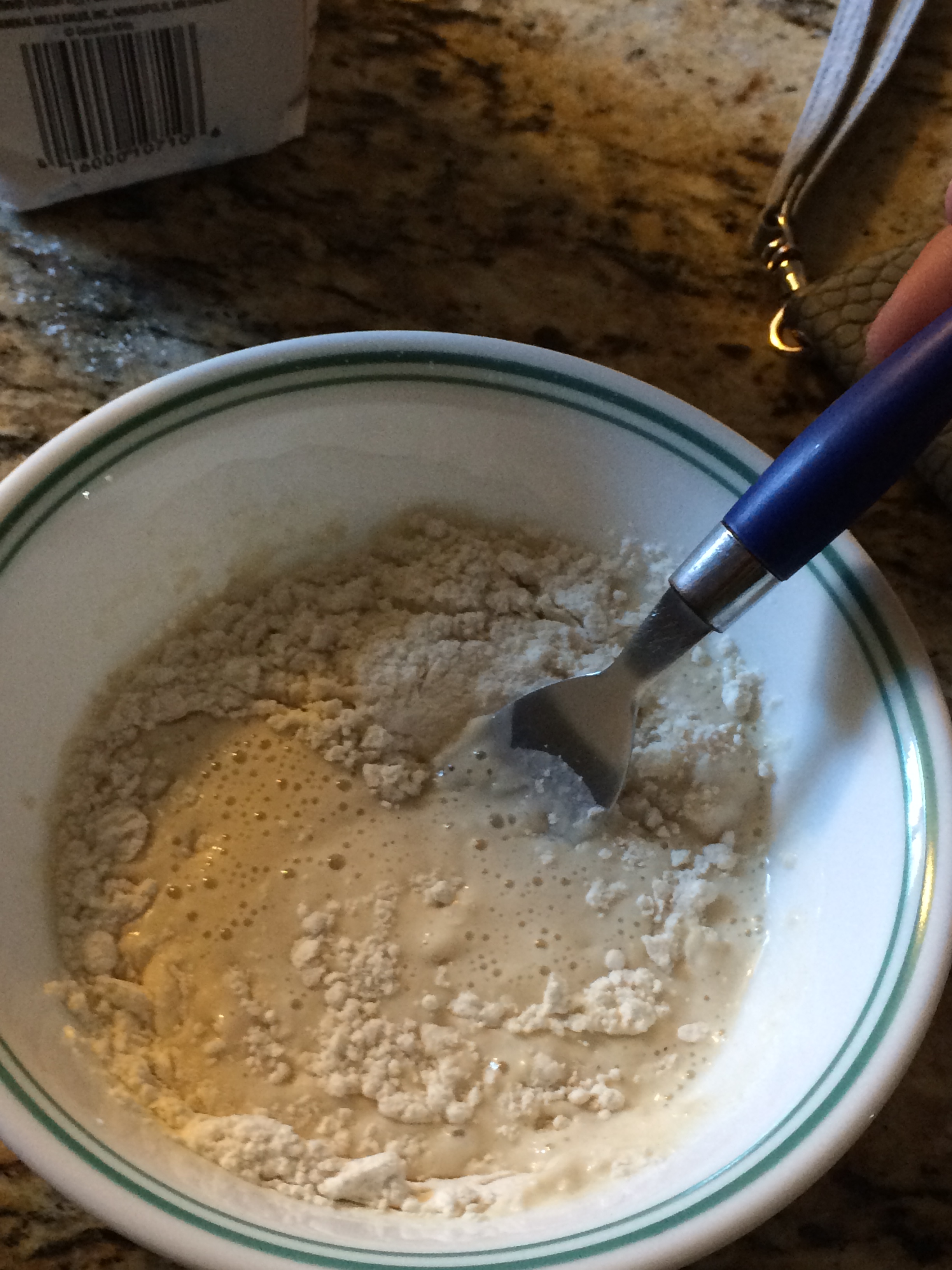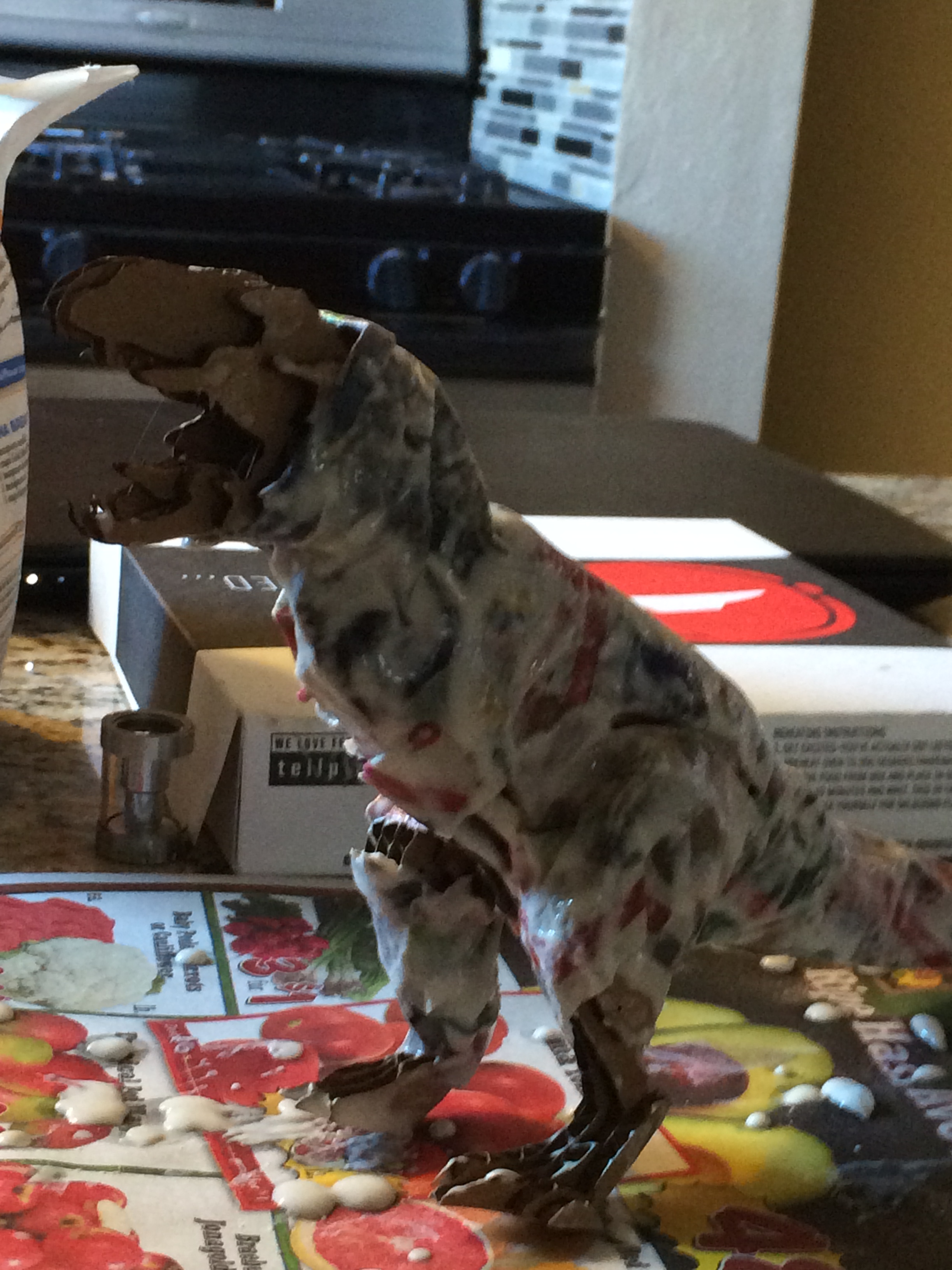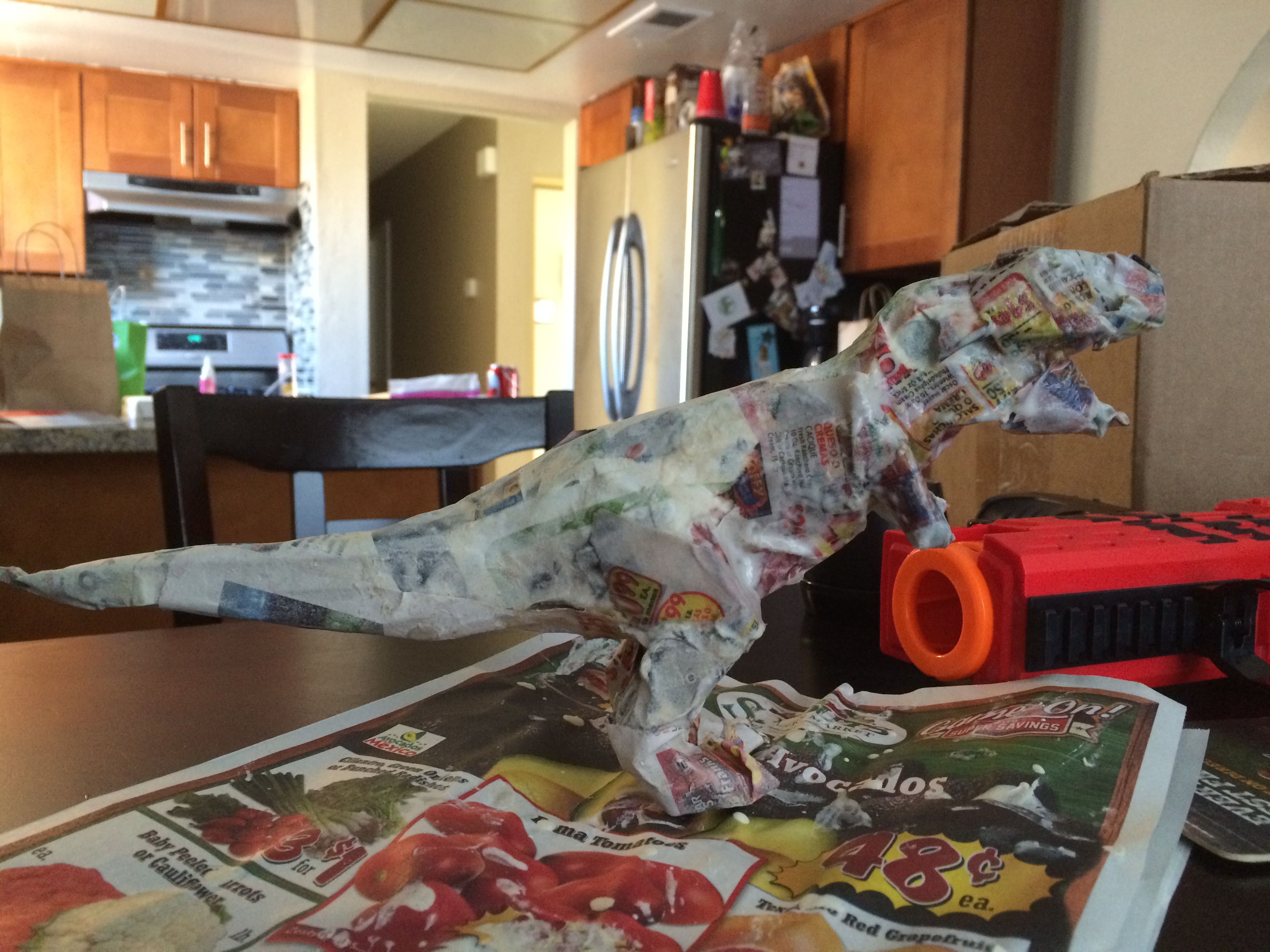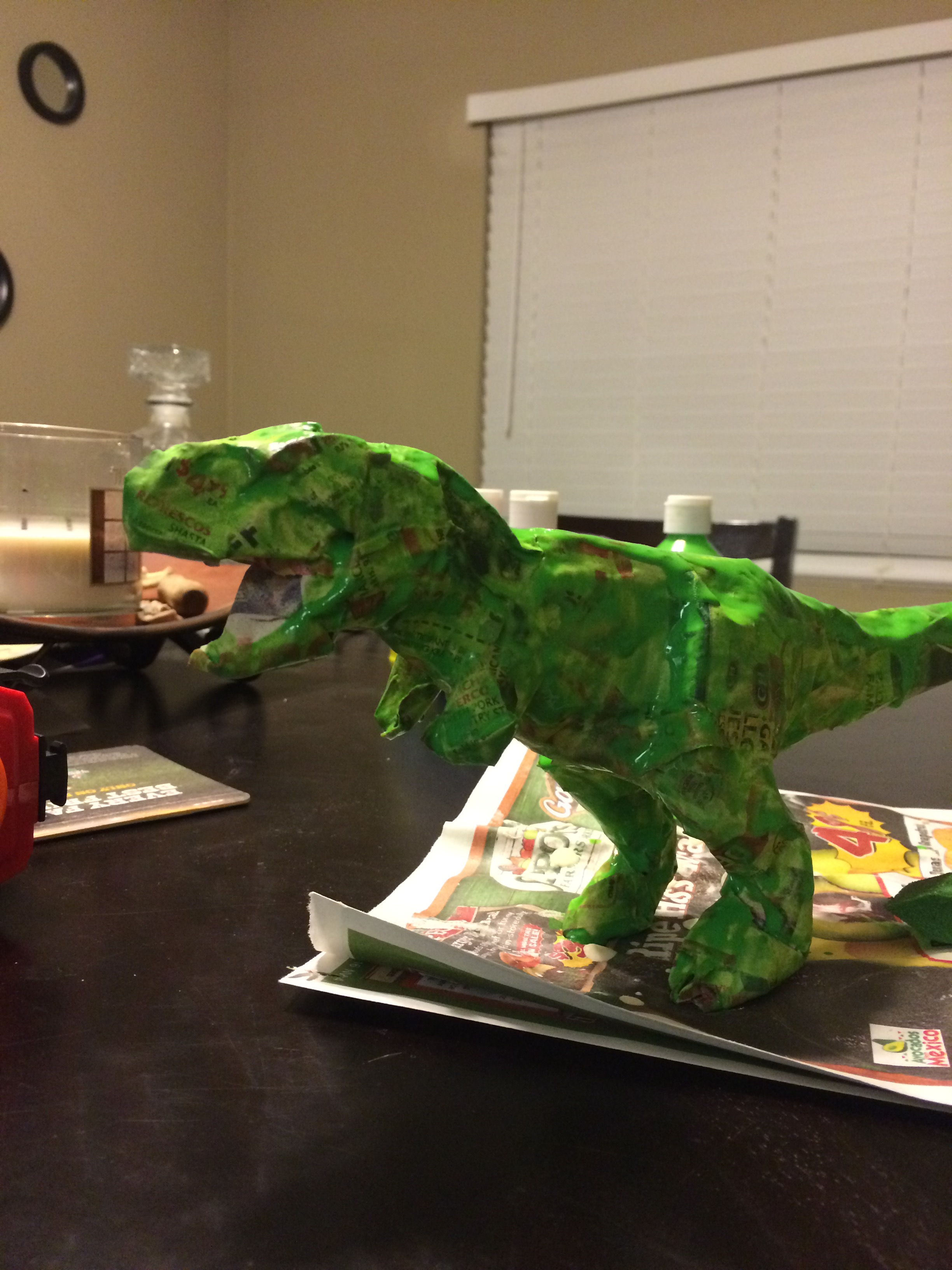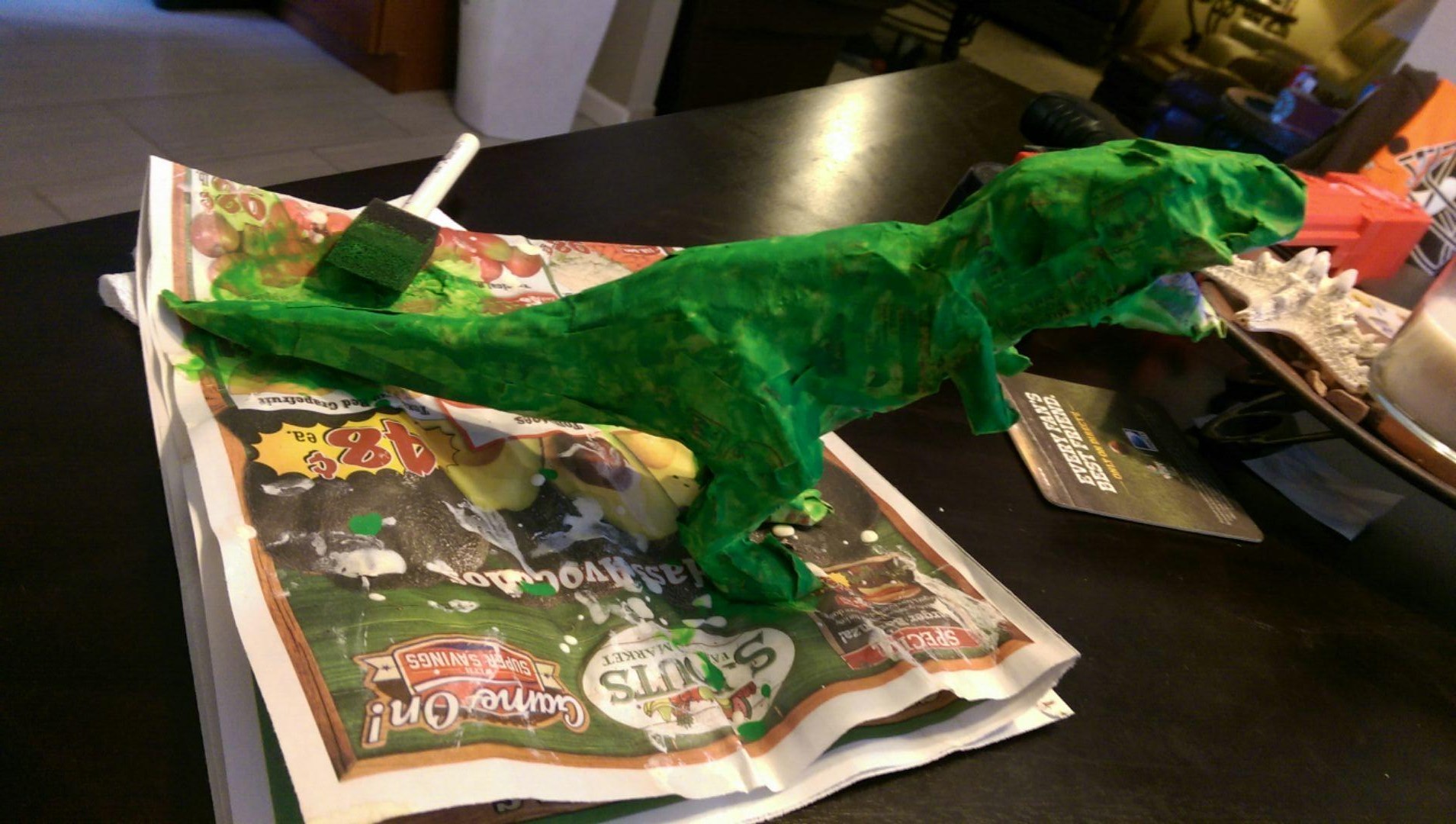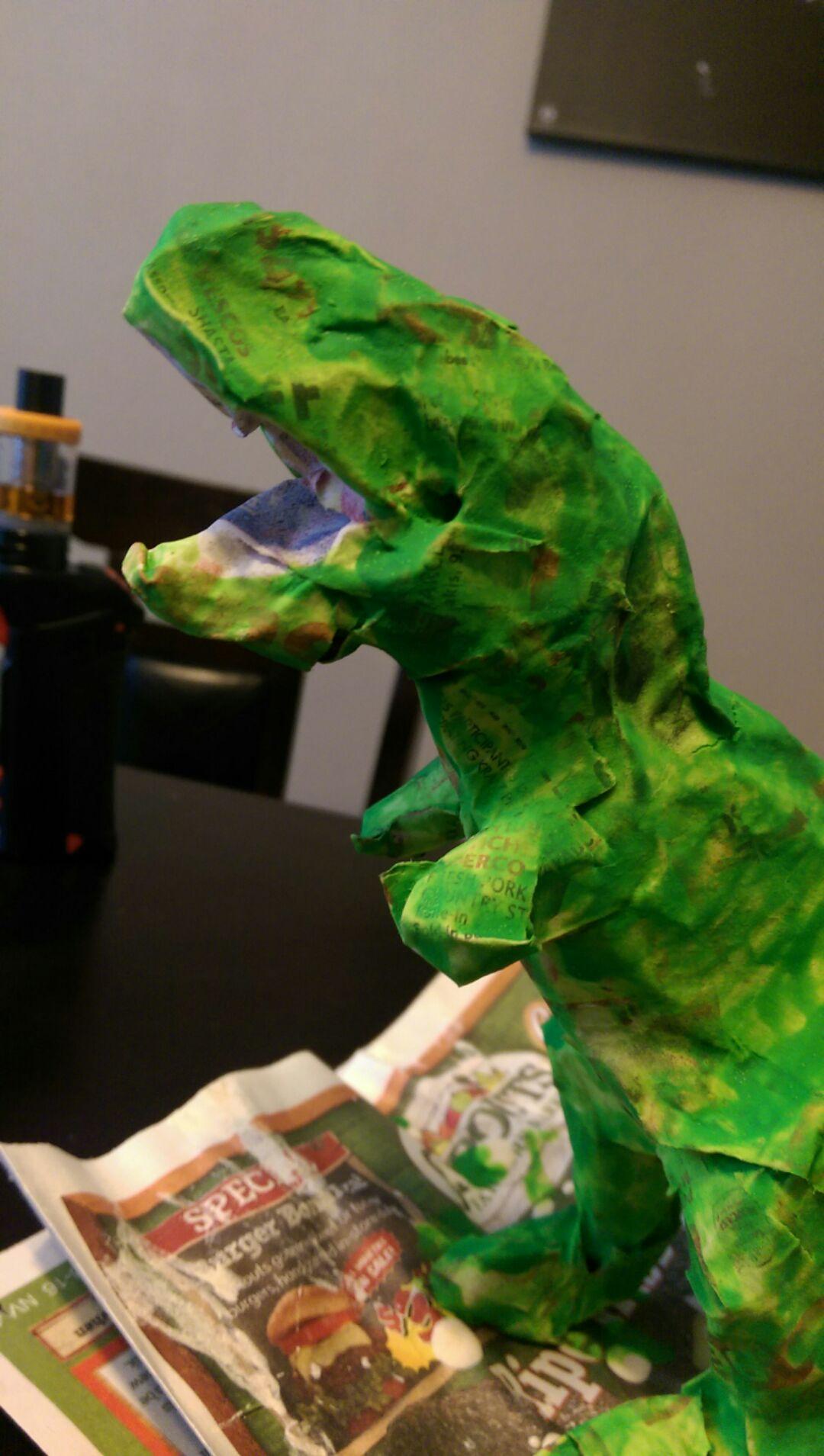Table of Contents
T-Rex Tutorial
Software and Resources
This project is based upon a tutorial done by instructables.com. The link to their tutorial can be found below.
How-to-Slice-Up-a-T-Rex-in-123D-Make
The goal of this project is to turn 2 dimensional slices of material (in this case, cardboard) into 3 dimensional models. The fabrication methods used for this project are outlined on this page: Fabrication Methods, Schedules, and Other Related Content
Once the desired dimensions have been selected, a construction technique needs to be selected. For this project, the “stacked slices” has been used.
It should look like this at this point:
Fabrication and Assembly
Once the cardboard has been cut, there will be upwards of fifty parts to assemble. Using the raster print setting to “engrave” labels onto the pieces makes assembly straightforward.
To prevent the pieces from sticking to the counter, aluminum foil was placed underneath.
Another neat feature of implementing the engraving is it gives contour lines to line up the pieces with. Upon looking at piece 10-2 where the neck is, those lines indicate where piece 11 should fit in between.
And here is the final result.
Covering and Painting
The last section of this project is to cover the T-Rex in papier mache and paint it.
The first portion is to make the glue for the papier mache. Simply flour, a bowl, a fork (or mixing utensil), and water is needed.
The flour-water mixture will initially look clumpy.
Mix until a smooth consistency is acquired. Add water and flour to the mixture as needed. The mixture should feel thinner than traditional Elmer's glue, but not watery either.
Strips of newspaper are then dipped into the glue mixture. The excess is wiped off and then the paper is applied directly onto the T-rex model made in the previous section.
This is continued until the entire model is covered.
At this point, the model should be left to dry. Another layer of papier mache can be added if needed. The next step is painting. A bright green color was chosen, and several layers of pain are needed to cover the print from the newspaper.
The finished product looks like this:
